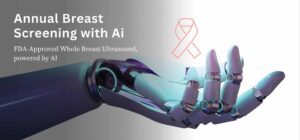Carol Fisher-Linn
According to Nationalbreastcancer.org, 1 out of every 8 women in the United States will be diagnosed with breast cancer in her lifetime. In 2024 to date, an estimated 310,720 women and 2,800 men have been diagnosed with invasive breast cancer, as well as 56,500 new cases of non-invasive (in situ) breast cancer. Please note – breast cancer in men flies under the radar and can be missed. Gentlemen, please look for any unusual signs, like lumps and swelling and don’t be shy to talk to your doctor. The good news is there are currently over 4 million breast cancer survivors in the United States. Caught early, the 5-year survival rate is 99%. “Awareness of the facts and statistics surrounding breast cancer in the United States is key in empowering individuals to make informed decisions about their health.” But the best defense against an unwelcome late-stage diagnosis is early detection through personal breast exams and mammography.
At mdanderson.org, we are told that, “although it can be alarming to get a call from your doctor, saying you need to come back for additional tests or scans after a routine mammogram, only about 5-10% of mammogram callbacks result in a breast cancer diagnosis.” Remember, the purpose of any screening protocol is to make sure nothing is missed.
According to the Mayo Clinic, “signs and symptoms of breast cancer may include any of these: A breast lump or thickened area of skin that feels different from the surrounding tissue. A nipple that looks flattened or turns inward. Changes in the color of the breast skin. In people with white skin, the breast skin may look pink or red. In people with brown and Black skin, the breast skin may look darker than the other skin on the chest or it may look red or purple. Change in the size, shape, or appearance of a breast. Changes to the skin over the breast, such as skin that looks dimpled or looks like an orange peel. Peeling, scaling, crusting, or flaking of the skin on the breast.” If any of these changes appear, DO NOT WAIT until your next mammogram. Call your doctor immediately.
It is critically important that you remain informed and up to date about any of the latest findings about detecting or treating breast cancer. Particularly so if a woman or man has dense breast tissue. Sometimes, more than a general mammogram is required to penetrate the tissue clearly. “The vast majority of breast cancers are found this way, which is why the mammogram is the gold standard,” says Dr. Kelli Ha, a breast radiologist at Houston Methodist. “But ultrasound can also play an important role in breast cancer screening and breast cancer detection … breast ultrasound uses sonic waves to visualize breast tissue,” says Dr. Ha. Again, dense breast tissue is generally why sonic waves are recommended. Or, a high risk of breast cancer (for example, strong family history), to evaluate an abnormal finding seen on a screening mammogram or to guide a breast biopsy or evaluate a breast infection.

Currently, women are being offered yet another alternative, or backup choice to the mammogram – AI. From the Susan G. Komen site, we learn this – “Across the country, some breast imaging clinics are beginning to offer women the option of adding an AI-assisted reading to their mammograms (often for an additional cost – presently there is no billing code for insurance companies so clinics will ask you to pay an extra $40 to $100 for the AI service). While mammogram images are traditionally double read by two radiologists, this new option replaces one of the readings by a radiologist using AI software.” According to the National Cancer Institute, mammograms correctly identify about 87% of breast cancers present at the time of screening. Again, I share this from Komen, “… as a second set of eyes, AI software could help radiologists read more screenings. AI software also has the potential to detect abnormalities faster.”
Surely, every one of us knows someone (family member or friend) who is the 1 in 8 women who will get cancer in their lifetime. Those with family members ought to be doubly alert and at a young age learn about self-examination, long before mammograms are recommended. Be smart. Be alert and don’t become a fatal statistic.
